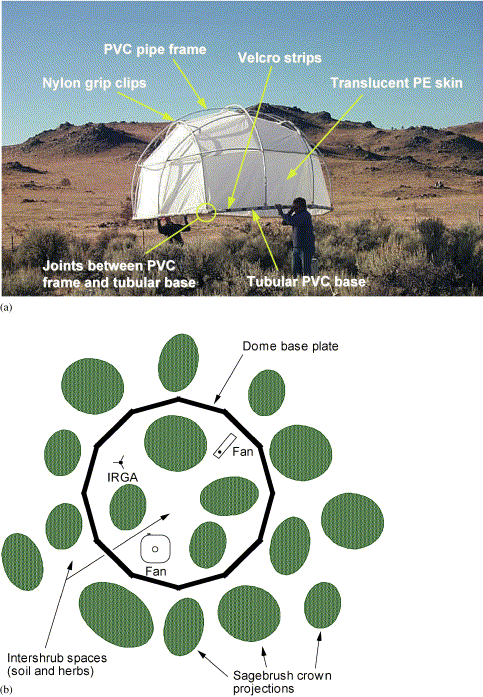Dr. John Arnone in Desert Research Institute in Nevada built such a chamber by modfying your yurt.

“The chamber is a modified version of a commercially available 4.2 m diameter dome-shaped yurt tent manufactured by Shelter Systems Inc. (Menlo Park, CA, USA; Fig. 1a). After modifications (see below) the dome covered an inside ground area of 12.25 m2, with a height of 2.0 m, a volume of 16.4 m3, and a weight of 30 kg. The semi-transparent (moderately translucent: https://shelter-systems.com/dome-coverings.html) woven ripstop polyethylene (PE) skin of the dome is held taut by nylon grip clips that are attached at 15 points to an external frame constructed of 3 cm diameter (OD) PVC pipe. The dome skin is actually made of eight large individual pieces of PE that create a shingled effect, with upper panels overlapping lower panels by about 10 cm. Because of the tautness of the skin, there are no apparent gaps between upper and lower shingles. However, we glued the upper and lower shingles together with silicon cement. The frame is made up of a total of 48 individual tent tubes (twelve 65 cm tubes and thirty-six 107 cm tubes) which enable the dome to be dismantled like a camping tent and stored in two duffel bags; one for the tubes and one for the skin.
We have modified the dome in several ways. We constructed and added a 12-sided tubular base made of twelve 98 cm long×6.5 cm diameter schedule 40 PVC irrigation pipe joined together with twelve 7.6-cm-diameter PVC pipe angles. We drilled one 3 cm diameter vertical hole in each base joint to each receive one of the 12 vertical PVC tent poles that would otherwise be staked to the ground if the dome were used as a shelter. We also shortened these 12 bottommost vertical tent poles by 10 cm to ensure that a sufficient length of PE skin material remained along the bottom perimeter of the dome to be wrapped three-quarters of the way around the PVC base tube (Fig. 1) when the vertical tubes are in place inside the 12 holes. To attach the bottom of the PE skin to the PVC base, and to anchor the vertical tubes in the base, we used adhesive-backed Velcro strips with one side of the Velcro attached to the PE film and the other to the PVC base tube.”
